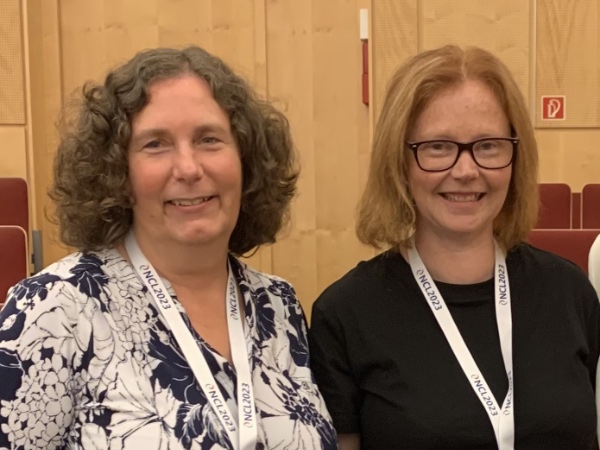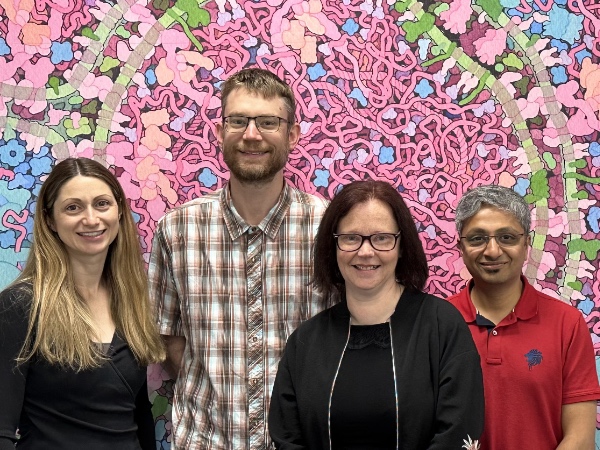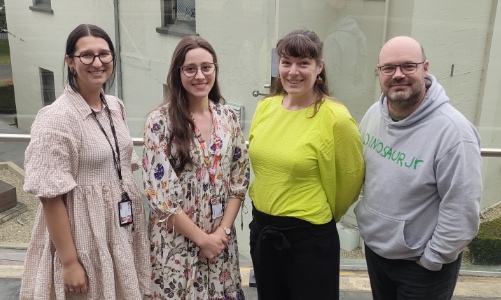Each year, BDSRA Australia invests in promising local research through its Batten Disease Research Grant Program. The objective of the Program is to advance research across Australia and New Zealand that has the potential to:
BDSRA Australia awards up to AU$100,000 in total each year, across one or more projects.
We encourage those involved in research related to allied healthcare, palliative and/or holistic care to consider applying.
The 2023-24 Research Grant round is NOW CLOSED. See Key Dates for 2023 below. The 2024-25 Grant Round is expected to open in April/May 2024.
For further information on the Research Grant Program, read the Research Program Guidelines.
To receive Research Grant Program updates please email research@bdsraaustralia.org.
| Milestone | Date |
|---|---|
| Expressions of Interest open: | Wednesday 17 May, 2023 |
| Expressions of Interest closed: | Wednesday 28 June, 2023 at 5pm AEST |
| Successful EOIs will be notified by: | Early August, 2023 |
| Full Research Proposals close: | Wednesday 4 October, 2023 at 5pm AEST |
| Funding announcements: | December, 2023 |
| Chief Investigator: | Professor Stephanie Hughes |
| Location: | Department of Biochemistry, Brain Health Research Centre, University of Otago, New Zealand |
| Grant: | $AU 35,000 (with support of Mila’s Miracle Foundation) |
| Duration: | 1 year |


CLN1 Batten disease most commonly presents with infantile-onset developmental delays, twitching or jerking of muscles, seizures, and mild to moderate intellectual disability. However, 40 % of CLN1 patients present with juvenile onset (6-10 years). CLN1 Batten disease is caused by mutations in the gene PPT1 that encodes a protein required for degradation of lipids in the lysosome, the cells waste disposal and recycling centre. Complete loss of PPT1 function causes infantile disease, while small amount of PPT1 activity delay onset in juvenile cases.
We are now learning that many genes like PPT1 are highly complex. Genes in humans are often interrupted by introns, chunks of DNA that need to be removed for the cell to read the correct sequence and produce the right protein. We have found that in CLN1, some of these introns are not removed, generating a mixture of different CLN1 forms, some of which are functional and many likely not. We predict that in CLN1 patient cells and different cell types, these forms are different and might contribute to disease. By identifying which CLN1 forms are normally expressed, which are changed in CLN1 patients, and those that have partial function in patient cells, we hope to be able to develop new therapies for CLN1 Batten disease to increase expression of partially functional PPT1.
To achieve our aim of developing a new therapy for CLN1 we will first identify the different CLN1 forms in patient cells and compare these healthy donors. We will test the different CLN1 forms first in blood samples and then compare the different forms present in patient skin-derived brain cell types to understand the different forms found in different cell types. Based on our findings we will identify new ways to treat CLN1 disease which will be tested in patient brain cells before future preclinical studies. For example, if we identify a form in patient cells that is poorly expressed but is predicted to have some function, we can activate expression using a technique known as antisense oligonucleotides. These bind to and activate genes to increase expression of proteins.
This project will therefore develop new approaches to understand PPT1 protein function, new patient brain cell models and importantly new strategies to treat CLN1 disease.
BDSRA Australia wishes to thank Mila’s Miracle Foundation for partnering with us to support this project.
| Chief Investigator: | Dr Lotta Oikari |
| Location: | QIMR Berghofer Medical Research Institute QLD |
| Grant: | $AU 24,961 |
| Duration: | 1 year |



Developing a new drug is an expensive and time-consuming process and it can take up to 10 years to deliver a newly developed drug to patients. Drug repositioning is an approach where new uses are found for already existing drugs that have been clinically tested for other diseases. Therefore, drug repositioning could be a valuable approach for Batten disease where treatment options are extremely limited and which is understudied in the pharmacological industry.
Our aim is to employ computer-based analysis tools to generate a list of drugs that target affected cell pathways in Batten disease. By using computer-based analysis, we will be able to identify from all available drug compounds the ones that are specific to Batten disease. We will then test the effects of these drugs in our laboratory cell models to identify which drug could have therapeutic effects in Batten disease.
After conducting drug repositioning analysis, we aim to identify safe concentrations of the repositioned drugs in human brain cells cultured in the lab to know which concentrations to use as a therapy without adversely affecting the cells. Once we have identified safe concentrations, we will then test the therapeutic effects of the repositioned drugs in stem cells that have been obtained from skin biopsies of Batten disease patients. The stem cells will first be induced to generate neurons and astrocytes, key brain cells that are affected in Batten disease. We will then apply safe concentrations of the identified drugs to Batten disease neurons and astrocytes and measure whether we can correct cell characteristics that are known to be affected in Batten disease. Once we have identified which drugs can correct cell function, we will also measure whether we can lower the amount of lipofuscin, which is accumulated in Batten disease.
As a major outcome, this study is expected to result in the identification of compounds that have therapeutic effects in Batten disease. These compounds will have faster access to patients as they are already clinically available and won’t need to undergo time-consuming drug development required for a new drug. Overall this study will contribute to discovering new treatments for Batten disease.
| Chief Investigator: | Dr Jenna Ziebell |
| Location: | Wicking Dementia Research and Education Centre, University of Tasmania |
| Grant: | $AU 28,290 |
| Duration: | 1 year |

An early aspect of CLN3 disease is increased inflammation within the brain. The major inflammatory cell within the brain are microglia, cells that have various functions associated with maintaining the health and proper functioning of other cells. However, we do not yet completely understand how microglia are affected in CLN3 disease, or if they are involved in disease progression. Our goal in this project is to fill this knowledge gap.
To do this, we will use advanced techniques in human stem cell biology to study human microglia in the laboratory. Alongside this work, we will test how microglia affect other cell types in the brain, by performing microglial transplants on a mouse model of CLN3 disease. We anticipate that we will find microglial cell functions that are aberrant in CLN3 disease, and learn about how these changes impact on other brain cells. Collectively, the data may lead to new drug targets, or even point to cell-based therapies that seek to repopulate the microglial cell population within the brain.